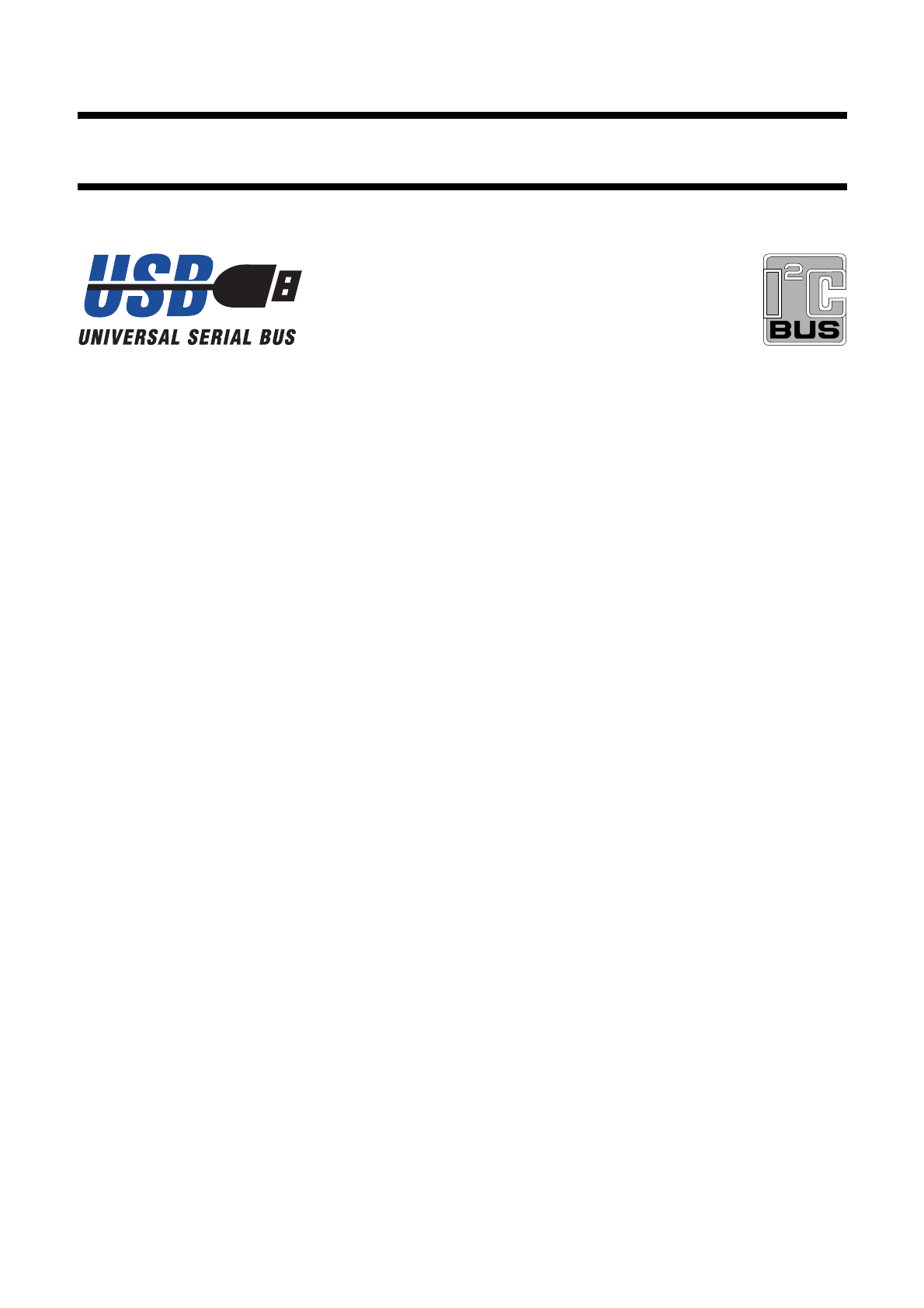
1999 May 10 2
Philips Semiconductors Preliminary specification
Universal Serial Bus (USB) CODEC UDA1325
FEATURES
General
• High Quality USB-compliant Audio/HID device
• Supports 12 Mbits/s serial data transmission
• Fully USB Plug and Play operation
• Supports ‘Bus-powered’ and ‘Self-powered’ operation
• 3.3 V power supply
• Low power consumption with optional efficient power
control
• On-chip clock oscillator, only an external crystal is
required.
Audio playback channel
• One isochronous output endpoint
• Supports multiple audio data formats (8, 16 and 24 bits)
• Adaptive sample frequency support from 5 to 55 kHz
• One master 20-bit I
2
S digital stereo playback output,
I
2
S and LSB justified serial formats
• One slave 20-bit I
2
S digital stereo playback input,
I
2
S and LSB justified serial formats
• Selectable volume control for left and right channel
• Soft mute control
• Digital bass and treble tone control
• Selectable on-chip digital de-emphasis
• Low total harmonic distortion (typical 90 dB)
• High signal-to-noise ratio (typical 95 dB)
• One stereo Line output.
Audio recording channel
• One isochronous input endpoint
• Supports multiple audio data formats (8, 16 and 24 bits)
• Twelve selectable sample rates (4, 8, 16 or 32 kHz;
5.5125, 11.025, 22.05 or 44.1 kHz; 6, 12, 24 or 48 kHz)
via analog PLL (APLL).
• Selectable sample rate between 5 to 55 kHz via a
second oscillator (optional)
• One slave 20-bit I
2
S digital stereo recording input,
I
2
S and LSB justified serial formats
• Programmable Gain Amplifier for left and right channel
• Low total harmonic distortion (typical 85 dB)
• High signal-to-noise ratio (typical 90 dB)
• One stereo Line/Microphone input.
USB endpoints
• 2 control endpoints
• 2 interrupt endpoints
• 1 isochronous data sink endpoint
• 1 isochronous data source endpoint.
Document references
•
“USB Specification”
•
“USB Device Class Definition for Audio Devices”
•
“Device Class Definition for Human Interface Devices
(HID)”
•
“USB HID Usage Table”
.
•
“USB Common Class Specification”
.


















